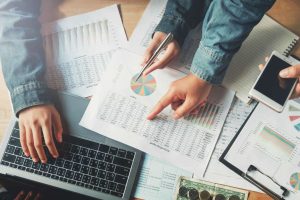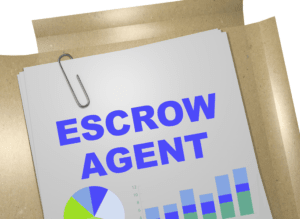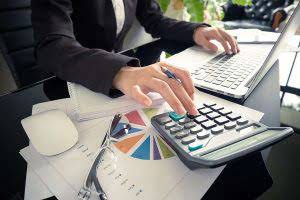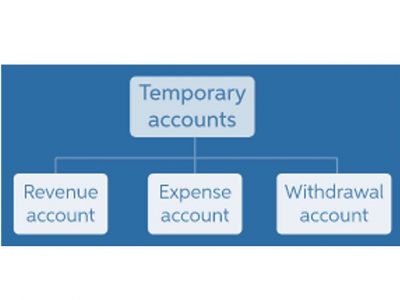
Now, find out the depreciating amount using the units of production method. Titus, the plant supervisor, determined the technical feasibility test of the bottling machine. Titus believes it will last for 5 years with a salvage value of $8000. Find out the depreciated expense for each year using the straight-line method. The advantages of straight-line depreciation are that it Certified Public Accountant is easy to use, it renders relatively few errors, and business owners can expense the same amount every accounting period.

Need for Calculating Depreciation
- Thus, on assets like this we use accelerated depreciation methods like the double declining method.
- These articles and related content is the property of The Sage Group plc or its contractors or its licensors (“Sage”).
- Depreciation is a method of allocating the cost of a tangible asset over its useful economic life.
- But over time the asset or liability will fade away as the difference is only a timing issue.
- Hence, the calculation is based on the output capability of the asset rather than the number of years.
- The book value is calculated as the asset’s cost minus the cumulative depreciation recorded.
A common system is to allow a fixed percentage of the cost of depreciable assets to be deducted each year. This is often referred to as a capital allowance, as it is called in the United Kingdom. Deductions are permitted to individuals and businesses based on assets placed in service during or before the assessment year. Canada’s Capital Cost Allowance are fixed percentages of assets within a class or type of asset. The fixed percentage is multiplied by the tax basis of assets in service to determine the capital allowance deduction.
- In this Keynote Support tutorial, I define and explain depreciation in easy to understand terms, and provide useful examples including the journal entries involved.
- For example, computers and printers are not similar, but both are part of the office equipment.
- For example, computer equipment might have a useful lifespan of five years.
- For example, if you buy a delivery van for ₹5,00,000, plan to use it for 10 years, and think you can sell it for ₹50,000 at the end, the depreciation takes into account all these numbers.
- The Modified Accelerated Cost Recovery System, or MACRS, is another method for calculating accelerated depreciation.
- It is time-consuming to accounting for depreciation, so accountants reduce the work load by only capitalizing assets if the amount paid exceeds a certain threshold level, such as $5,000.
Depreciation Formula:

If an asset is marketable at the end of its lifespan, its expected selling price is called its salvage value, or residual value. The understanding and practices surrounding depreciation evolved further with the advancement in financial markets, technology, and the complex nature of modern-day businesses. Founded in 1993, The Motley Fool is a financial services company dedicated to making the world smarter, happier, and richer. Several factors influence the depreciation of an asset, including its initial cost, useful life, salvage value (if any), and the chosen method. So, Company A would record a depreciation expense of $900 each year for 10 years. Depreciation depreciation simple definition is an “expense without cash.” This means you don’t spend money when you calculate it, but it still helps lower taxes.
Depreciation: Definition, Formula, Types & Examples
- As a result, this provides a clearer financial picture for stakeholders.
- Depreciation can be calculated using different methods, depending on the type of asset and accounting practices.
- You can claim depreciation to reduce your total taxable income, saving you money on your taxes.
- So, depreciation per unit of production is (£80,000 – £30,000) / £50,000 – £1 per unit of production.
- When Jim purchases this asset, he will first record it on the balance sheet for the amount he paid for it by debiting the equipment account and crediting the cash account.
Knowing how depreciation works can significantly give small businesses a boost. For SYD depreciation, sum up the digits corresponding to each year of the asset’s useful life, generating a fraction applicable to each depreciation year. Enables a higher allocation of the asset’s cost in the initial years of its useful life, followed by a gradual reduction in subsequent years. Multiplying the straight-line depreciation rate by 2, then applying this doubled rate to the asset’s book value at the beginning of each year. Conversely, if an asset provides benefits based on its usage capacity like the number of units produced for a plant, then it should be depreciated based on the number of units produced each month. As per GAAP4, an entity should select a method of depreciation based on the pattern in which the economic benefits embodied in the asset are consumed by the entity.

Units of Production Depreciation
- Your business’s depreciation expense reduces the earnings on which your taxes are based, reducing the taxes your business owes the IRS.
- Fixed assets like buildings, vehicles, rental properties, commercial properties, and production equipment all decline over time.
- Several factors influence the depreciation of an asset, including its initial cost, useful life, salvage value (if any), and the chosen method.
- Instead, depreciation allows you to spread the cost over the years you will use it.
- This foresight aids in maintaining operational efficiency and competitiveness over the long term.
If you make upgrades in the property before renting it out you can add them to the depreciation as well on a condition that they are useful and can last for more than a year. The most common way of calculating depreciating expense is the straight-line method. The difference between the fixed asset cost and its salvage value is divided by the useful life of that asset in years to get the depreciating value for each year. There are multiple classes of assets, including commodities and property. At its core, Depreciation comes from the ‘matching’ accounting concept whereby businesses must match the cost of long-term assets over the https://www.bookstime.com/articles/contribution-margin periods in which they are expected to generate revenue. Depreciation is an important part of accounting records, which helps companies maintain their income statement and balance sheet properly with the right profits recorded.
